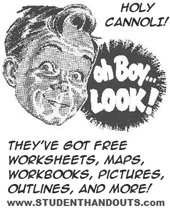Outlines and PowerPoints are effective tools that can help high school World History students better understand the global economic issues that emerged after World War II. This period was marked by complex developments, including the Marshall Plan, the rise of the United States as a global economic leader, the spread of communism and capitalism, and the founding of institutions like the World Bank and the International Monetary Fund (IMF). Using outlines allows students to organize key information logically, identify cause-and-effect relationships, and summarize critical points. Structured outlines help clarify topics such as reconstruction, foreign aid, economic rivalry, and postwar trade patterns.
PowerPoint presentations can further enhance understanding by combining visual and textual content. Teachers can use maps, graphs, images, and bullet-point summaries to highlight important facts, economic trends, and global connections. PowerPoints also help break down dense information into manageable sections, making it easier for students to follow along and take notes. When used interactively—through discussions or student-led presentations—they encourage engagement and reinforce comprehension.
Together, outlines and PowerPoints support different learning styles, provide clear frameworks for studying, and make abstract economic topics more accessible. They are especially useful for reviewing key concepts and preparing for assessments in a structured, visually engaging way.
|








